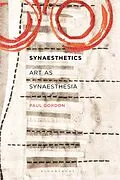Paul Gordon proposes a new theory of art as synaesthetic and applies this idea to various media, including works--such as movies, illustrated books, and song lyrics--that explicitly cross over into media involving the different senses. The idea of art as synaesthetic is not, however, limited to those "cross-over" works, because even an individual poem or novel or painting calls upon different senses in creating its syn-aesthetic "meaning."
Although previous studies have often devolved into those who see an obvious connection between art and synaesthesia and those who adamantly reject such a notion, Synaesthetics furthers our understanding of synaesthesia as an important, if not essential, component of artistic expression.
Autorentext
Paul Gordon is Professor of Comparative Literature and Humanities at the University of Colorado, Boulder, USA. He is the author of The Critical Double: Figurative Meaning in Aesthetic Discourse (1995), Tragedy After Nietzsche: Rapturous Superabundance (2001), and Dial 'M' for Mother: A Freudian Hitchcock (2008).
Inhalt
Acknowledgments
1. Introduction. Synaesthetics: Art as Synaesthesia
2. "Deep Down": Metaphor as Synaesthetic
3. The Synaesthetic Origin of the Work of Art
4. Baudelaire's Poetry of Synaesthetic Correspondences
5. Plastic Fantastic: Paul Klee's Synaesthetic Word-Images
6. Rouault's "True Icons": A Synaesthetic Unveiling of the Miserere's Veronicas
7. Feeling/Hearing Picasso: The Synaestheics of Cubism and the Vollard Suite
8. Georgia O'Keeffe and the Music of Flowers
9. Joan Mitchell and the Power of Blue
10. Rock and Roll as Synaesthesia: Why Rock Lyrics (Don't) Matter
11. Hearing Images: Movie Music
Epilogue. Tasting Art: Art as Synaesthetic
Notes
Bibliography
Index
